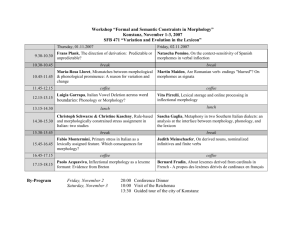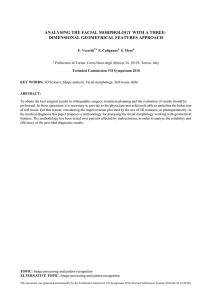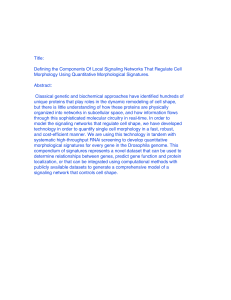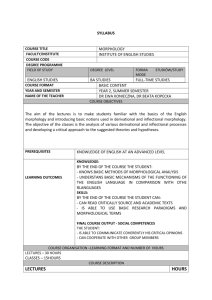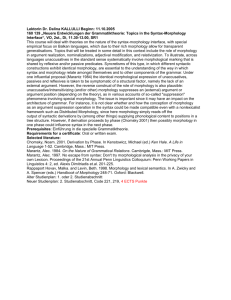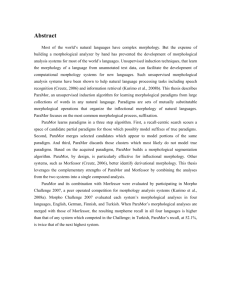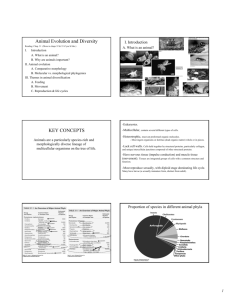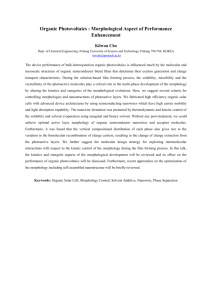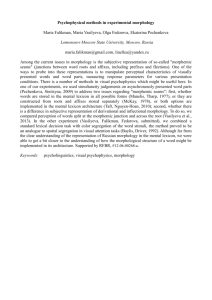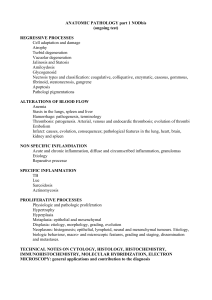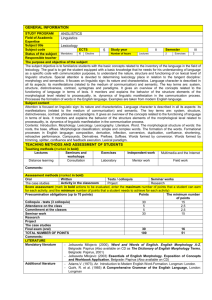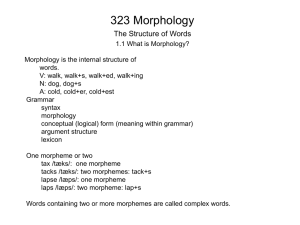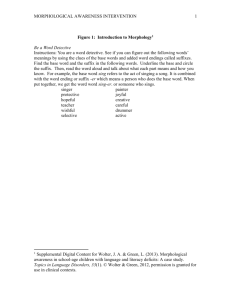ACM_abstract_morphology
advertisement
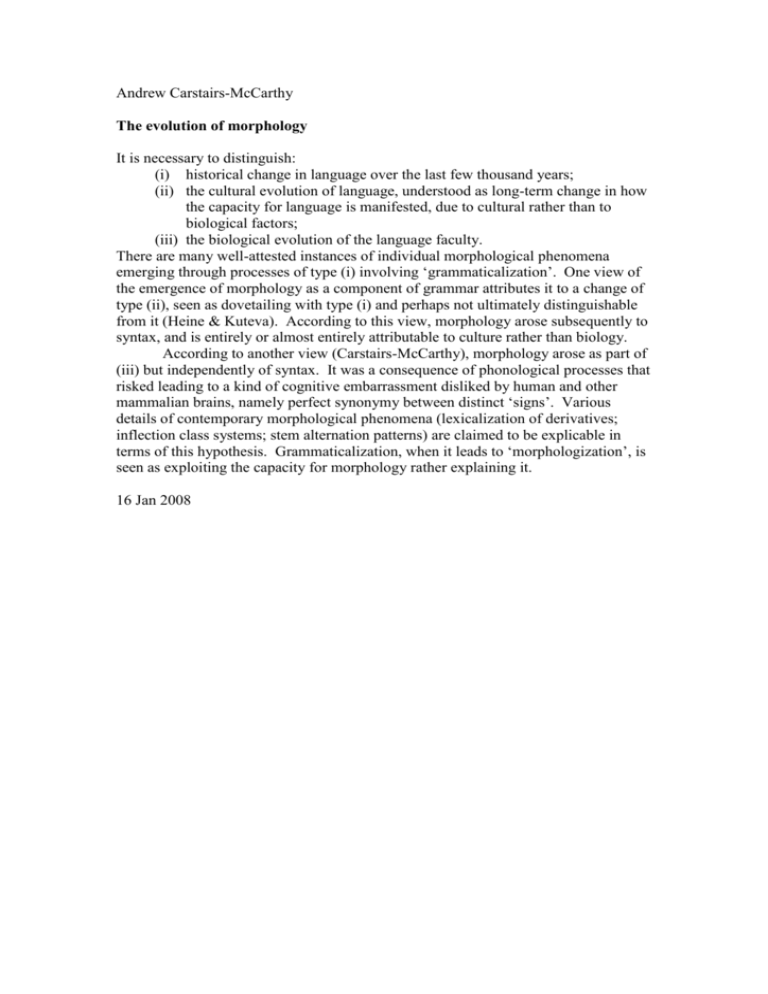
Andrew Carstairs-McCarthy The evolution of morphology It is necessary to distinguish: (i) historical change in language over the last few thousand years; (ii) the cultural evolution of language, understood as long-term change in how the capacity for language is manifested, due to cultural rather than to biological factors; (iii) the biological evolution of the language faculty. There are many well-attested instances of individual morphological phenomena emerging through processes of type (i) involving ‘grammaticalization’. One view of the emergence of morphology as a component of grammar attributes it to a change of type (ii), seen as dovetailing with type (i) and perhaps not ultimately distinguishable from it (Heine & Kuteva). According to this view, morphology arose subsequently to syntax, and is entirely or almost entirely attributable to culture rather than biology. According to another view (Carstairs-McCarthy), morphology arose as part of (iii) but independently of syntax. It was a consequence of phonological processes that risked leading to a kind of cognitive embarrassment disliked by human and other mammalian brains, namely perfect synonymy between distinct ‘signs’. Various details of contemporary morphological phenomena (lexicalization of derivatives; inflection class systems; stem alternation patterns) are claimed to be explicable in terms of this hypothesis. Grammaticalization, when it leads to ‘morphologization’, is seen as exploiting the capacity for morphology rather explaining it. 16 Jan 2008




